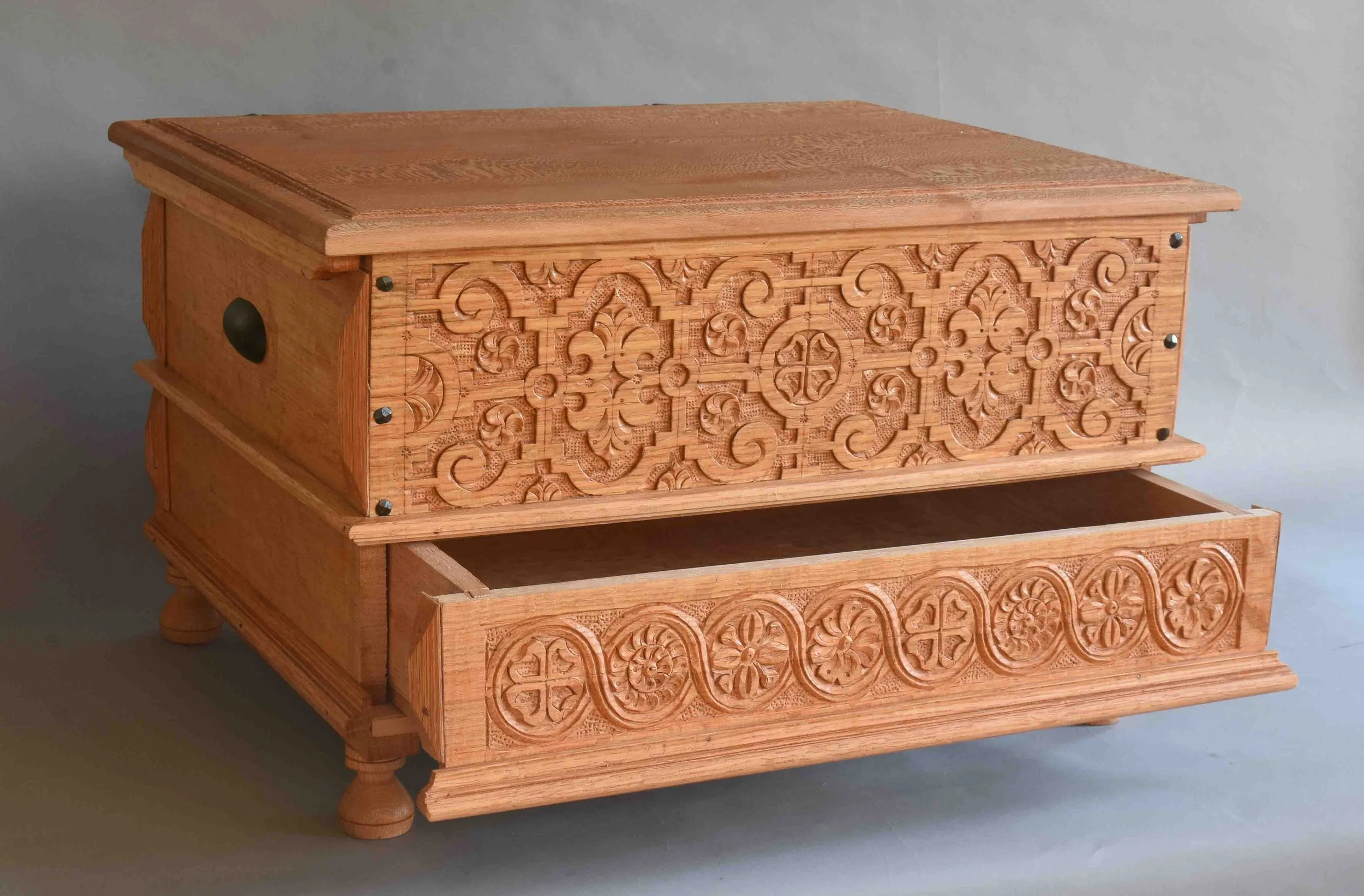November 21, 2025
I have a few carved boxes that I’ve finished this fall, some photos and text about four of them below. If you’d like to buy one or have questions, email me at PeterFollansbee7@gmail.com
Honeychurch pattern box
Carved boxes; Fall 2025
Carved box, red oak & white pine
November 2025
H: 7 3/4” W: 22 3/4” D: 13 1/2”
$1,500 plus shipping in US
small Ipswich box - SOLD
a small carved oak box, based on works from 17th-century Ipswich, Massachusetts . Oak box and lid, pine bottom.
H: 6 5/8” W: 14” D: 9”
$1,000 plus shipping in US.
Braintree Box
Carved oak box, white pine lid & bottom
H: 7 1/4” W: 22” D: 14”
$1,500 plus shipping in US
Carved box with a drawer
Carved box with drawer
H: 14” W: 23 1/2” D: 18”
$3,000 plus shipping in US
A carved box with a lidded till inside. All handmade, the box is red oak, bottom and lid white pine.
The carvings are based on work from Devon, England c. mid-17th century. The front pattern of linked “rosettes” is called a “guilloche.” This particular one is partly based on an example in a village in Devon called Honeychurch.
This box is my interpretation of some small boxes that survive from the period. I’ve carved the sides, which I sometimes see on period examples - but almost always do on mine. There’s a wooden/pintle hinge - again, sometimes seen in the period, I frequently use it. This one has an oak lid and a till inside.
This box is based on examples from the Savell shop in Braintree, Massachusetts, c. 1640-1700. It’s a near-verbatim copy - I changed the hinges to a wooden cleat-and-pintle hinge and used a pine lid instead of oak. Carvings are directly based on the period examples.
Every now and then I like to tackle something a bit more complex - this box-with-a-drawer is one I’ve tried a couple of times before. I changed one or two things this time but it’s a pretty close copy of one by Thomas Dennis in Ipswich, Massachusetts between 1660-1706.
All the oak is riven, quartered - in the usual period manner. The lid is quartersawn American sycamore (Platanus occidentalis) - the original used sycamore, but flatsawn- it has a large split down the middle. I glued up two quartersawn boards to get my lid.
The drawer is all riven oak - the sides meet the drawer front with a sliding dovetail. Bottom boards are thin, edges meet with a small tongue & groove. No drawer pull, you open the drawer using those “glyphs” attached at the ends of the drawer front.
Inside the box is a lidded till - and the box lid hinged with iron gimmals/snipebills.














